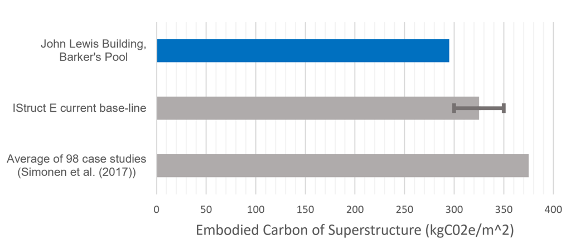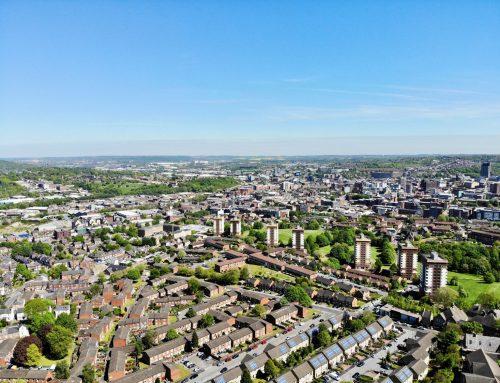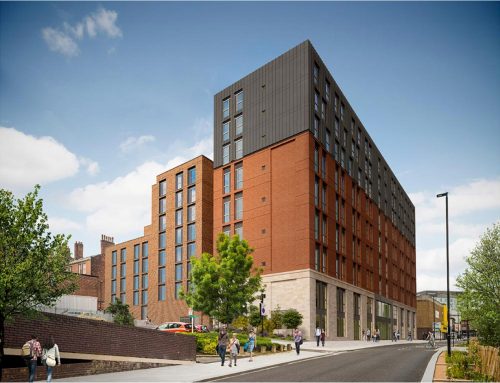When the John Lewis building closed in early 2021, a much loved part of Sheffield was lost. The council now has the opportunity to transform an empty building into something with a positive impact on the city.
Though outdated in appearance, the building has large floor-to-ceiling heights making it adaptable and a great candidate for refurbishment, rather than demolition and rebuild. This would reduce the amount of carbon emitted through both the extraction and production of new materials. These emissions are known as embodied carbon and have been ignored on too many occasions in order to justify the demolition of existing buildings.
The UK construction industry is still using carbon intensive materials such as concrete and steel, meaning that if the building were to be demolished and replaced, a similar amount of carbon would likely be emitted in the rebuild. Over 4300 tonnes of carbon (t.C02e) were released in the production of the superstructure’s materials. This is equivalent to over 4000 flights from London to New York showing that even if only the structure is retained, significant amounts of carbon can be saved. Architectural plans were taken from the Sheffield City Archives which allowed for the total embodied carbon of the superstructure to be calculated.

Figure 1 – Equivalent Carbon Emissions to rebuilding the John Lewis Building’s Superstructure (Using Carbon Trust conversion factors)
Figure 2 compares the embodied carbon of the John Lewis building to equivalent modern benchmarks within literature; it highlights what a waste demolition would be. Currently the Institution of Structural Engineers expects a structure to release more carbon than has been calculated for this building.

Figure 2 – Comparison between the John Lewis Embodied Carbon Results and various benchmarks
Saving the structure of a building is particularly important, as generally it accounts for the largest proportion of embodied carbon (Embodied Carbon Measurement Study). If all exterior cladding was removed the appearance could be completely changed and the building modernised while still reducing the carbon footprint of the project.
The carbon emissions released during material production are not the only ones that would be prevented if the structure was retained. According to estimates provided by the Institution of Structural Engineers, transporting the replacement materials would emit a further 90t.CO2e, even if locally manufactured. This is just one of the many other stages within the life-cycle of a new construction that would release carbon. By keeping the original building, you would reduce emissions caused by the demolition of the structure and disposal or reprocessing of the wasted materials. Also, re-using parts of an existing building would remove emissions related to the transportation, construction, and maintenance of potential replacement materials.
Conclusion
The John Lewis building was built in the early 1960s, making it outdated in both appearance and energy performance. Both of these can be improved through major refurbishment; by keeping the existing structure, the whole life carbon of the project can be dramatically improved. Isn’t it logical to use existing stock to create the buildings of the future? It is time to stop wasting the Earth’s finite resources and use retrofit to its fullest potential. Sheffield’s John Lewis building is the perfect opportunity to do just this.
—
Authors:
Danielle Abbey, PhD Student at the University of Sheffield and member of the RISE group





